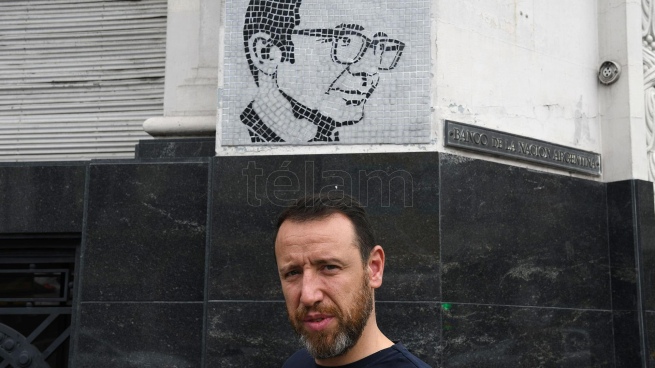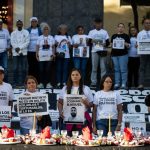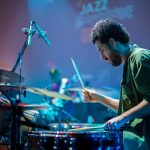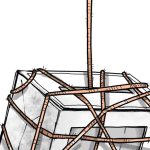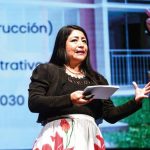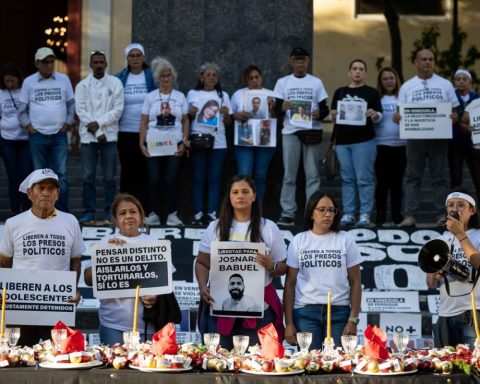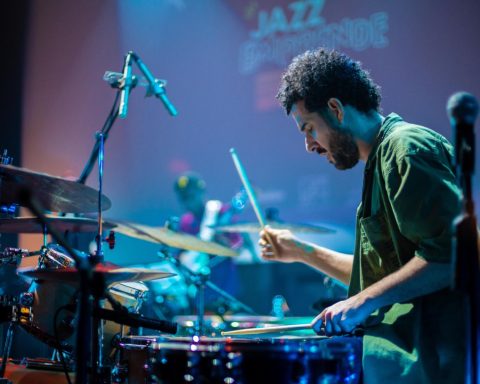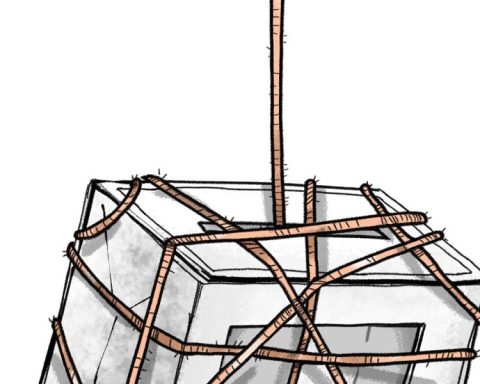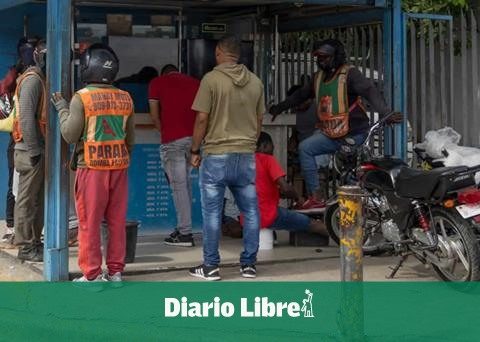One of the unsolved mysteries of Argentine literature and politics, the fate of the unpublished work of Rodolfo Walsh that the ESMA task force took from his house in San Vicente hours after kidnapping him on the Buenos Aires corner of San Juan and Entre Ríos, is the key to the book “Ambush”of the journalist Facundo Pastor, whose recent appearance coincides with the 45th anniversary – which is celebrated this Friday – of the fall into the hands of the dictatorship of the writer and head of Intelligence and Information of the Montoneros organization.
The story “Juan was going by the river”which Walsh had finished writing on March 24, 1977 along with the “Open letter to the Military Junta”on the first year of the coup, in addition to other texts such as “Ñancahuazu”about Che in Bolivia, or the autobiographical account “The 27th”dedicated to the relationship with his father, were stolen and taken to the ESMA along with other personal papers and political documents, but all this material was removed from there in the first months of 1979.
Pastor followed the trail of those writings with the expectation of discovering in whose hands they are today, in the event that they have not been destroyed, and after following a chain of testimonies, the ball of yarn reached a house located on the corner of Jaramillo and Zapiola, in the Saavedra neighborhood, a house that at the end of 1978 had been bought by the frigate lieutenant’s father -also a public accountant- George Radice.
Starting in 1979, the repressor converted that house into a slave workplace for militants held captive by the Navy who were forced to do media clipping (daily monitoring of national and foreign media) as input for the -later frustrated- presidential project of the dictator Emilio Massera.
In researching the book, Pastor contacted Mercedes Ines Carazoa survivor of the ESMA who was detained in that house from the beginning of 1979 to March 1980 and who later rebuilt her life after going into exile in Peru: Carazo confirmed that she, along with another militant then imprisoned but who died in 1998, Antonio Nelson Latorre (“El Pelado Diego”), they found a box identified with the initials RW in a room on the ground floor that used to be locked.
The box contained handwritten or typed sheets, and on one of the closest shelves they found the archive of the newspaper Noticias, closed in 1974, where Walsh had worked as head of the Police section.
The discovery occurred between the beginning of 1979 and the first quarter of 1980, shortly after Massera left the Navy headquarters, when the ESMA task force had already dispersed the documentation and evidence of the extermination among several buildings. produced on the premises of Libertador Avenue.

This process was accompanied by the seizure of properties stolen from the disappeared -Radice used the alias Juan Héctor Ríos for these purposes- and the creation of companies to function as a front or to generate new money, such as the audiovisual production company Chroma SA, installed in Besares 2025 in the Nuñez neighborhood (during the day it carried out this activity, at dawn it was used to microfilm documentation that was sent to the Naval Intelligence Service; a story that deserves another book).
The recovery of Walsh’s stolen works was one of the wishes that accompanied the writer’s last partner throughout his life, Lilia Ferreyrawho died in March 2015, who in his public pronouncements -such as an interview with the newspaper Tiempo Argentino in 2011- used to say that “I kept the incorruptible hope that they would ever appear”.
Pastor’s book intends to take on that challenge, which sounds like the weight of a commitment, a mandate, like some phrases by Walsh (“Feel again the moral satisfaction of an act of freedom. Defeat terror. Circulate this information”he wrote in Cadena Informativa in the last moments of his clandestinity).
With that horizon “Ambush” (Aguilar) takes up revelations published by others (such as the new identity adopted by the “Bare Diego” in Peru, the ILO academic adviser Miguel Angel Castigliamentioned by Joseph Paul Feinman and by the former head of the Menemist SIDE Juan Bautista Yofre) to try to resolve the main debt of the Argentine literature and cultural field: what happened to Walsh’s unpublished texts? Where are they?
The book, almost in the epilogue, provides a transcendent clue: Carazo revealed to the author that before he died Latorre -or Castiglia, or “El Pelado Diego”- told him that he had managed to get a part of the file from Saavedra’s house Walsh in the hands of the sailors.
Pastor, who wrote a book about the prosecutor Alberto Nisman and another about the former CEO of Tournaments Alexander Burzacois convinced that the unpublished writings of the author of “Operation Massacre” exist and “someone has them”.
Some ESMA survivors, such as Martín Gras, even read the entire story “Juan was going by the river”, which never appeared and could not be edited. Gras found it in the basement storage room of the clandestine center, next to a collection of the CGT de los Argentinos and other papers stolen in the raid on Walsh’s house in San Vicente.
A journalist with experience in radio and TV, Pastor spoke with Télam about the biggest unknown in Argentine letters, but also about the writer’s period of secrecy who defied the Military Junta until he was shot and taken to the ESMA, dying on 25 March 1977, in the ambush set in San Juan between Entre Ríos and Combate de los Pozos.
“It is an exercise in memory, an opportunity for other generations, not so close to that time, to continue rewriting history. Perhaps with greater distance.”Facundo Pastor
“Mine is a reconstruction look, a search that continues with the investigation of the Walsh documents. The important thing about this investigation was to be able to advance a couple of squares more in what had been advanced, which was not much, regarding the destination of the documents. What happened to those documents, what was the route, what was the course of those boxes and where did they end up when they left the ESMA?”Pastor pointed out in the interview, which took place in a bar located on the same block where, 45 years ago, the writer’s kidnapping took place.
Télam: What certainties do you have about the names mentioned in the book when referring to the fate of the documents?
Facundo Pastor: -The house on Jaramillo Street, in Saavedra, is a fundamental setting for this investigation. It is an operational house that Massera sets up, just as he had set up the office on Cerrito Street (by Cerrito 1136, which was the headquarters of the Social Democracy Party). There they end up detained to do slave labor, clipping of newspapers, union reports. The certainty I have is that the house existed. I even toured it. I speak of a forbidden room, because it was a place where the sailors had taken many of the things they take out of the ESMA. And I managed to interview one of the two people who had contact with the stories: Mercedes Inés Carazo, “Cuqui” Carazo, who was an important member of the organization (Montoneros). Like Antonio Nelson Latorre, alias “El Pelado Diego”, the person who would have been the last holder of the documents. He would have given them to a relative, but I’m still looking for them.
T: With what criteria did you approach the research and writing of a book crossed by so many variables?
FP: It is an exercise in memory, an opportunity for other generations, not so close to that time, to continue rewriting history. Perhaps with greater distance. I very much defend the idea of making a reconstruction without so many evaluations, without sanctifying Walsh. I don’t think he would have been comfortable with a sacrosanct look at himself. And on the other hand, the stories we are looking for have an incalculable cultural value, impossible to measure, and since I think they are somewhere, we have to keep looking for them.
T: Did you read Walsh? What do you like most about his work?
FP: I read it a lot. In “Operation Massacre”, it seems to me, he unfolds an ethical and transparency pact with the reader that is unmatched and that is to tell and explain what he knows, and not tell and not explain what he does not know. A very own narrative way, very Walshean, of saying “we know that such and such entered at such and such a time, we don’t know at what time such and such a person entered.” It seems to me that this pact of truth with the reader is amazing.
T: Passion for detail…
FP: Yes, very rigorous. And I think the reader appreciates it very much. It is an idea to always work from journalism, that journalism always works from the question mark and that the question mark brings you closer to certainty, and not start from certainty as absolutism, as the only method.
